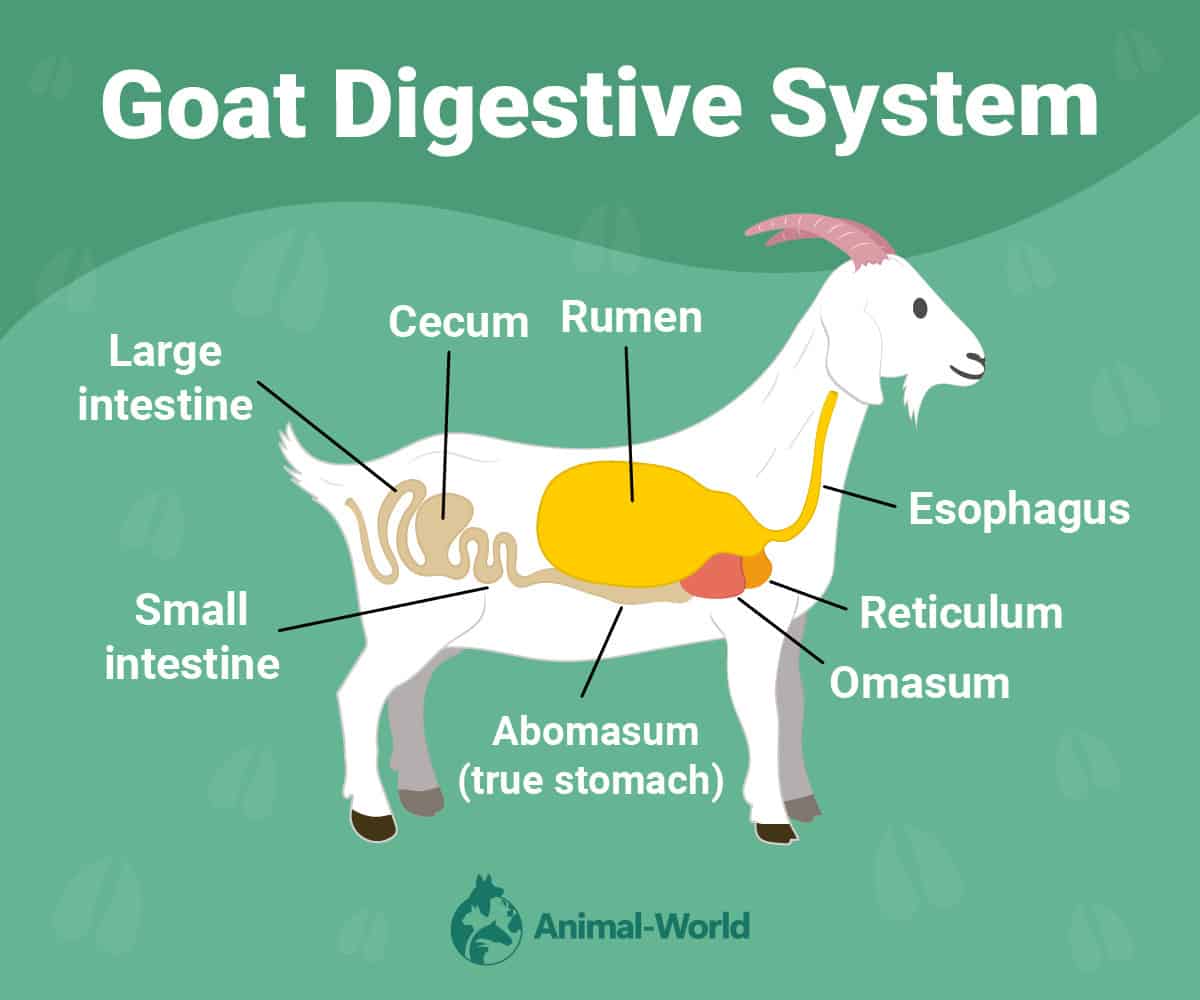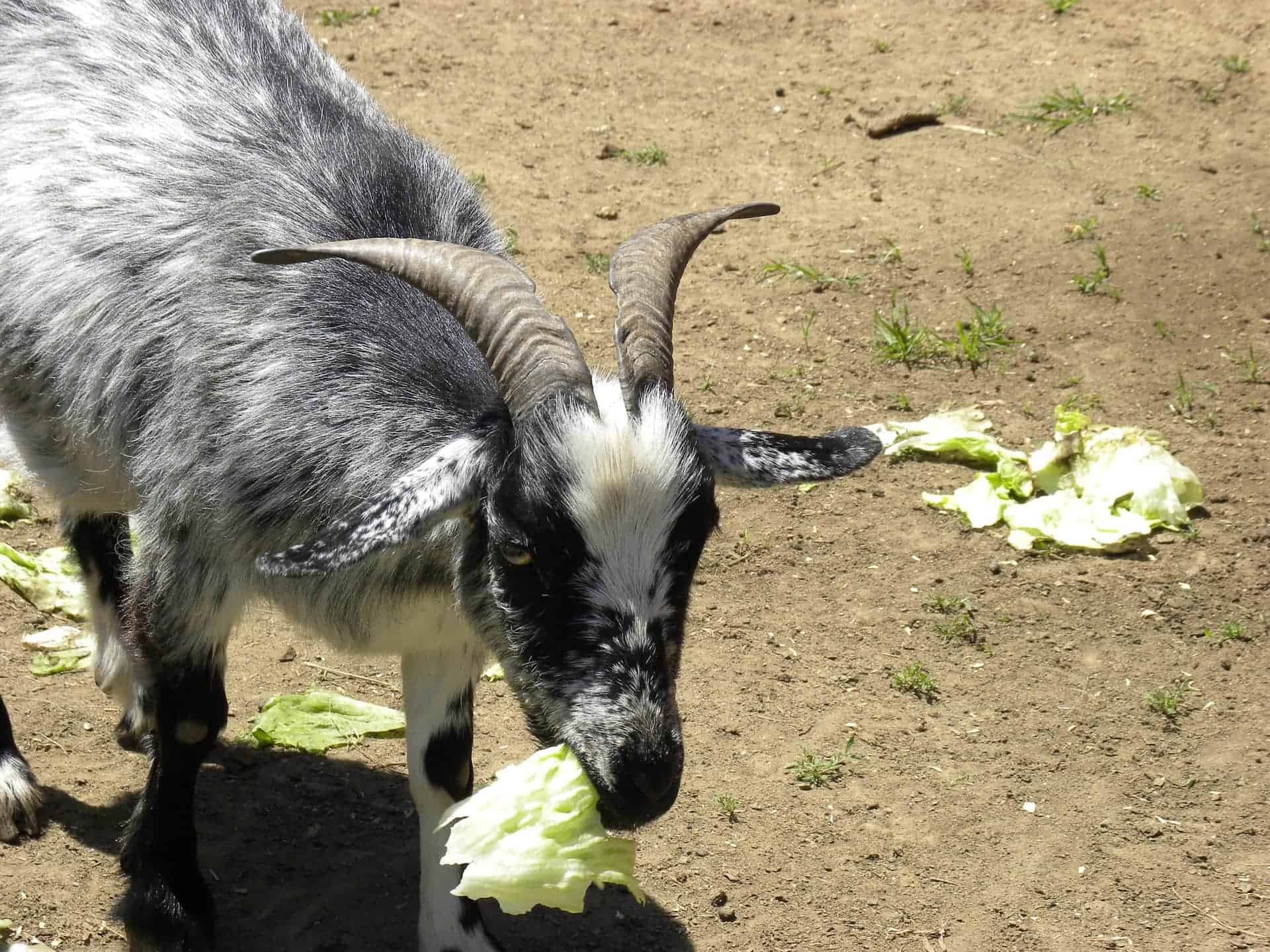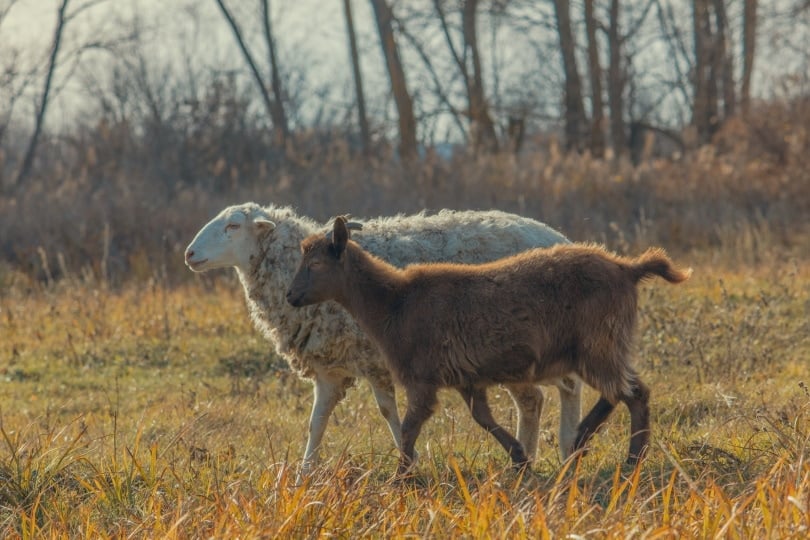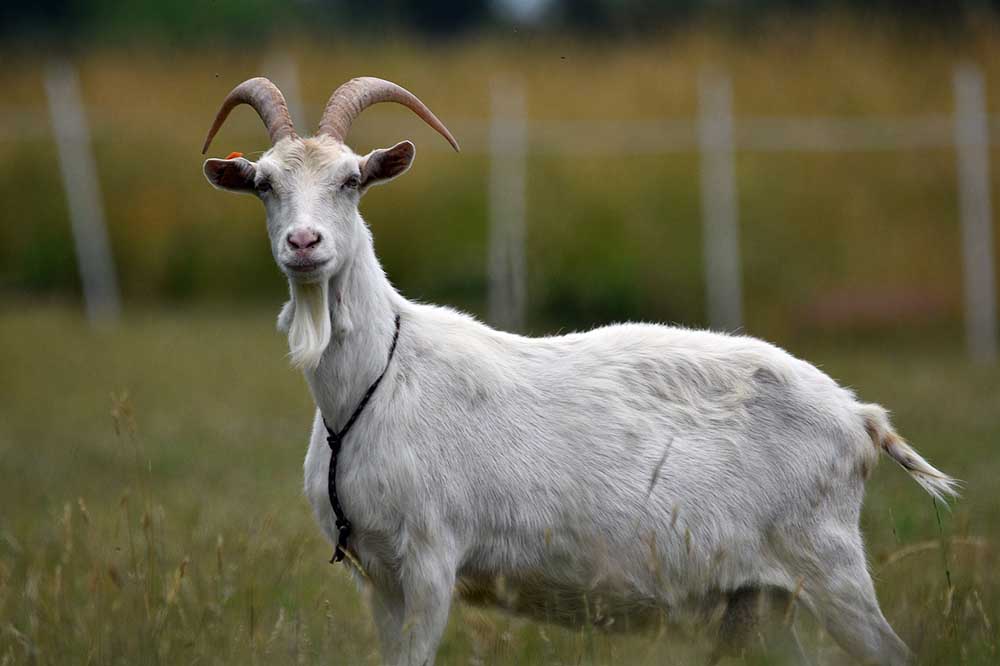Approved by Dr. Luqman Javed
If you’ve ever wondered about farm animal digestion, you might already know that many of these animals are thought to have more than one stomach.
The answer is slightly tricky! Goats are ruminants, and their stomachs have 4 chambers. However, they only have 1 true stomach. Let’s find out more about how the stomach works and what’s going on with their insatiable appetites.

Goats Stomach Chambers
Goats have four stomach chambers that are equally important for digestion. Goats have three chambers that are considered “forestomachs”, while the abomasum (the fourth) is the true stomach.
Each of these chambers performs several functions, ultimately working together to digest food.

1. Rumen
Food first visits the rumen. The rumen is the largest forestomach, capable of holding up to six gallons in large breed goats. It is a vat of fermentation where bacteria break down roughage with microorganisms.
Throughout the fermentation process, the goat will regurgitate the contents. As they rechew this material, it will reenter the rumen for further fermentation. This act of regurgitation, re-chewing, re-salivating, and re-ingestion of food from the rumen is known as rumination, which is what gives ruminants their name.
Microbes in the rumen help break down plant matter to form various compounds which the goat’s body uses for nutrition as they move further down their digestive tract. Being prey in nature, the rumen is also convenient for storage of food – this would give goats the opportunity to quickly feed in the absence of predators, and digest food safely when browsing for food isn’t safe.
2. Reticulum
The main function of the reticulum is to collect smaller food particles and move them into the omasum while the larger particles are sent back to the rumen for further digestion. It is essentially like a “checkpoint” for ingesta – smaller particles can pass, but larger ones cannot.
In addition, the reticulum also traps and collects heavy/dense objects consumed by goats. These are often inedible, and end up in the reticulum and remain there to prevent their movement along the rest of the digestive tract. However, sharp objects (such as a nail) may pierce the reticulum and, given its proximity to the goat’s heart and lungs – can prove to be a major health issue.
3. Omasum
Remnants of food go from the reticulum into the omasum. The main role of the omasum is to pass food further along to the abomasum, but it plays a role in absorbing fatty acids, minerals, and the fermentation of food because of its involvement in water absorption. Long tissue folds help remove excess fluid, absorbing water and electrolytes alongside other micronutrients.
4. Abomasum
The abomasum is the main part of the stomach where typical digestive enzymes are. The rest of the food that has been passed through all stomachs is digested further. The abomasum is more comparable to a human stomach, as this is the part that functions similarly.
In young animals, milk bypasses the rumen because of the presence of a structure called the esophageal groove, suckling allows milk to bypass the rumen.

A Goat’s Diet
Goats are herbivores, even though they sometimes eat things they shouldn’t. Goats love sampling new menu items, but they can also be quite picky with food. Goats are natural browsers and prefer eating food from shrubs or trees that are off the ground whenever the opportunity arises.
Typically, goats eat:
- Goat pellets
- Hay
- Grass
- Grain
- Weeds
- Bark
- Fruit
- Vegetables
Goats’ digestive systems entirely rely on processing plant roughage.

Can Goats Eat Anything?
Goats get quite a reputation for eating anything and everything in sight. While it’s true that they love sampling a variety of foods, and sometimes objects, in their surroundings—they can’t eat just anything.
Goats should never eat human food or inanimate objects. They truly just like to walk around sampling everything in sight. While it isn’t uncommon for them to munch on things like tin cans, they usually want the glue or label outside and possibly leftover contents inside.
Goats really don’t have a draw to eat metal.
Actually, goats can be quite picky sometimes about what they put in their mouths. Some might be voracious eaters, while others are quite fussy.
Related Read: Can Goats Safely Eat Poison Ivy? What You Need To Know!
Other Animals that Have Multiple Stomachs
Goats are the only ones who have multiple stomach chambers! Many grazing animals that enjoy plant matter also have this type of digestive system. It is specifically created to metabolize these types of organic materials.
Animals who share this makeup include:
- Sheep
- Cattle
- Buffalo
- All antelopes
- All gazelles
- Giraffes


Conclusion
The four chambers of a goat’s stomach make their overall eating experience different from many other animals. However, it is a myth and common misconception that goats can eat whatever they want.
On the contrary, as herbivores, they eat various grasses, bark, hay, fruits, veggies, and grains to give their bodies the necessary nutrients.
Featured Image Credit: Pixabay
